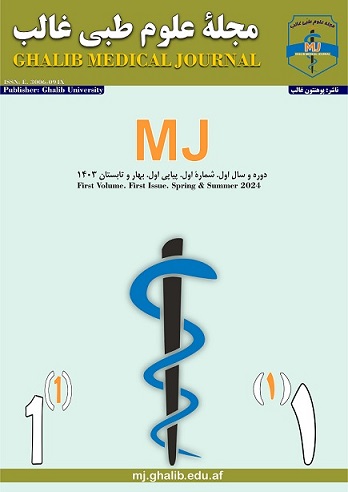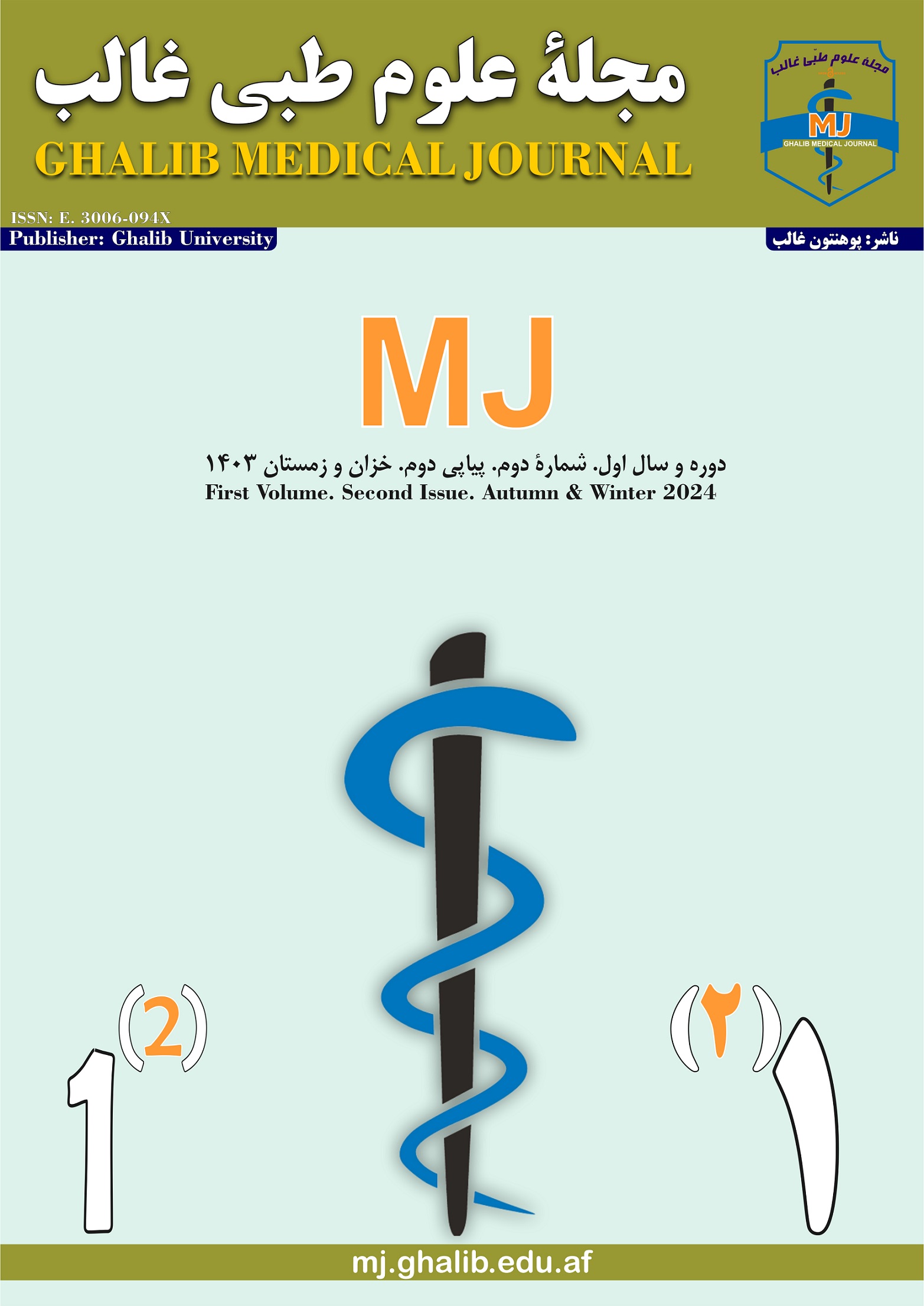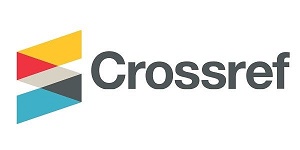Studying the causes of bone loss around dental implants
DOI:
https://doi.org/10.58342/ghalibMj.V.1.I.1.5Keywords:
Dental Implants, Bone Loss, Peri-Implantitis, Implant Failure, Microgap, FixtureAbstract
Background: Teeth are like a foundation for a house. Therefore, if these teeth are lost for any reason, it is like the house is destroyed by losing its foundations, the related bone also decays. So with this in mind, in order to prevent this bone loss, dental implants are implanted in place of lost natural teeth so that they can restore the function of the lost tooth and at the same time prevent bone loss; But various number of implants with various materials are produced by different companies; Therefore, from the point of view of the researchers, these various implants can undergo bone restoration in their four surroundings due to a series of reasons and factors, which should reduce the amount of bone restoration to zero; Therefore, in order to find the reasons for this bone loss in dental implants, a large number of researchers have conducted a large number of researches for this purpose, each of which revealed several reasons and factors, including the experience of the doctor himself, when implanting the implant, The type of implant, the type of implant implantation, the amount of existing jawbone, the patient's age, the patient's immune system, the reaction of the jawbone against the implant itself, the patient's health, such as smoking or not, and a series of different factors. Another is effective in the absence of jaw bone erosion for dental implants.
methods: This research was in the form of a Systemic review article, which was conducted using reliable websites such as Google Scholar, PubMed, International Journal of Implant Dentistry, and MDPI, which used words such as bone loss in dental implants, Osseointegration for dental implants. , bone quality for dental implants was searched. Articles that discussed the effective factors due to bone loss were included in the study.
Results: All the factors and reasons that lead to bone loss around dental implants are matter of several factors, which are related to the doctor, the patient, and the implant system and materials; But in this article, only three variables have been studied as factors of the article, which are: patient age (40-59), types of implants (bone level), cigarettes (tobacco).
References
Lemos C, Nunes RG, Santiago JF, De Luna Gomes JM, Limirio JPJO, Del Rei Daltro Rosa CD, et al. Are implant-supported removable partial dentures a suitable treatment for partially edentulous patients? A systematic review and meta-analysis. The journal of Prosthetic Dentistry/The Journal of Prosthetic Dentistry 2023;538–546. https://doi.org/10.1016/j.prosdent.2021.06.017.
Liu F, Su W, You C-H, Wu AY-J. All-on-4 concept implantation for mandibular rehabilitation of an edentulous patient with Parkinson disease: A clinical report. The Journal of Prosthetic Dentistry (Print) 2015;745–750. https://doi.org/10.1016/j.prosdent.2015.07.007.
Faggion CM. Critical appraisal of evidence supporting the placement of dental implants in patients with neurodegenerative diseases. Gerodontology 2013;2–10. https://doi.org/10.1111/ger.12100.
Packer M, Nikitin V, Coward T, Davis DM, Fiske J. The potential benefits of dental implants on the oral health quality of life of people with Parkinson’s disease. Gerodontology 2009;11–18. https://doi.org/10.1111/j.1741-2358.2008.00233.x.
Mohamed H, Kothayer M. Effect of LASER on Crestal Bone Loss Around Dental Implants Retaining Mandibular Overdenture. Egyptian Journal of Oral and Maxillofacial Surgery 2020;11:142–9. https://doi.org/10.21608/omx.2021.63323.1110.
Shetty S. Bone loss around implants: Is it inevitable, preventable, irreversible, or untreatable? Journal of Dental Implants 2021;11:65. https://doi.org/10.4103/jdi.jdi_32_21.
Ormianer Z, Block J, Matalon S, Kohen J. The Effect of Moderately Controlled Type 2 Diabetes on Dental Implant Survival and Peri-implant Bone Loss: A Long-Term Retrospective Study. The International Journal of Oral & Maxillofacial Implants 2018;33:389–94. https://doi.org/10.11607/jomi.5838.
Immediate loading on 3.0 mm narrow implants: a prospective multi‐center study with 2‐year follow‐up. Clinical Oral Implants Research 2017;28:24–24. https://doi.org/10.1111/clr.23_13040.
Akcalı A, Trullenque‐Eriksson A, Sun C, Petrie A, Nibali L, Donos N. What is the effect of soft tissue thickness on crestal bone loss around dental implants? A systematic review. Clinical Oral Implants Research 2016;28:1046–53. https://doi.org/10.1111/clr.12916.
Mehl C, Zhang Q, Lehmann F, Kern M. Retention of zirconia on titanium in two-piece abutments with self-adhesive resin cements. The Journal of Prosthetic Dentistry 2018;120:214–9. https://doi.org/10.1016/j.prosdent.2017.11.020.
Kowalski J, Lapinska B, Nissan J, Lukomska-Szymanska M. Factors Influencing Marginal Bone Loss around Dental Implants: A Narrative Review. Coatings 2021;11:865. https://doi.org/10.3390/coatings11070865.
Al-Akhali M, Chaar MS, Elsayed A, Samran A, Kern M. Fracture resistance of ceramic and polymer-based occlusal veneer restorations. Journal of the Mechanical Behavior of Biomedical Materials 2017;74:245–50. https://doi.org/10.1016/j.jmbbm.2017.06.013.
Oswal M, Amasi U, Oswal M, Bhagat A. Influence of three different implant thread designs on stress distribution: A three-dimensional finite element analysis. The Journal of Indian Prosthodontic Society 2016;16:359. https://doi.org/10.4103/0972-4052.191283.
Esposito M, Hirsch J, Lekholm U, Thomsen P. Biological factors contributing to failures of osseointegrated oral implants, (II). Etiopathogenesis. European Journal of Oral Sciences 1998;106:721–64. https://doi.org/10.1046/j.0909-8836..t01-6-.x.
Naveau A, Shinmyouzu K, Moore C, Avivi-Arber L, Jokerst J, Koka S. Etiology and Measurement of Peri-Implant Crestal Bone Loss (CBL). Journal of Clinical Medicine 2019;8:166. https://doi.org/10.3390/jcm8020166.
Baggi L, Cappelloni I, Di Girolamo M, Maceri F, Vairo G. The influence of implant diameter and length on stress distribution of osseointegrated implants related to crestal bone geometry: A three-dimensional finite element analysis. The Journal of Prosthetic Dentistry 2008;100:422–31. https://doi.org/10.1016/s0022-3913(08)60259-0.
Winkler S, Morris HF, Ochi S. Implant Survival to 36 Months as Related to Length and Diameter. Annals of Periodontology 2000;5:22–31. https://doi.org/10.1902/annals.2000.5.1.22.
Factors affecting late implant bone loss: A retrospective analysis. The Journal of Prosthetic Dentistry 2007;98:215. https://doi.org/10.1016/s0022-3913(07)60094-8.
Monje A, Suarez F, Galindo‐Moreno P, García‐Nogales A, Fu J, Wang H. A systematic review on marginal bone loss around short dental implants (<10 mm) for implant‐supported fixed prostheses. Clinical Oral Implants Research 2013;25:1119–24. https://doi.org/10.1111/clr.12236.
Raikar S, Talukdar P, Kumari S, Panda S, Oommen V, Prasad A. Factors affecting the survival rate of dental implants: A retrospective study. Journal of International Society of Preventive and Community Dentistry 2017;7:351. https://doi.org/10.4103/jispcd.jispcd_380_17.
Baggi L, Cappelloni I, Di Girolamo M, Maceri F, Vairo G. The influence of implant diameter and length on stress distribution of osseointegrated implants related to crestal bone geometry: A three-dimensional finite element analysis. The Journal of Prosthetic Dentistry 2008;100:422–31. https://doi.org/10.1016/s0022-3913(08)60259-0.
Eazhil R, Swaminathan S, Gunaseelan M, Kannan Gv, Alagesan C. Impact of implant diameter and length on stress distribution in osseointegrated implants: A 3D FEA study. Journal of International Society of Preventive and Community Dentistry 2016;6:590. https://doi.org/10.4103/2231-0762.195518.
Broggini N, McManus LM, Hermann JS, Medina R, Schenk RK, Buser D, et al. Peri-implant Inflammation Defined by the Implant-Abutment Interface. Journal of Dental Research 2006;85:473–8. https://doi.org/10.1177/154405910608500515.
Bra-nemark P-I, Zarb GA, Albrektsson T, Rosen HM. Tissue-Integrated Prostheses. Osseointegration in Clinical Dentistry. Plastic and Reconstructive Surgery 1986;77:496–7. https://doi.org/10.1097/00006534-198603000-00037.
Abrahamsson I, Berglundh T. Effects of different implant surfaces and designs on marginal bone‐level alterations: a review. Clinical Oral Implants Research 2009;20:207–15. https://doi.org/10.1111/j.1600-0501.2009.01783.x.
Li J, Yin X, Huang L, Mouraret S, Brunski JB, Cordova L, et al. Relationships among Bone Quality, Implant Osseointegration, and Wnt Signaling. Journal of Dental Research 2017;96:822–31. https://doi.org/10.1177/0022034517700131.
Choi J, Lee E, Kim B, Kim O. A retrospective study on systemic factors affecting marginal bone loss and success rate of implants. Clinical Oral Implants Research 2020;31:196–196. https://doi.org/10.1111/clr.138_13644.
Eshkol‐Yogev I, Tandlich M, Shapira L. Effect of implant neck design on primary and secondary implant stability in the posterior maxilla: A prospective randomized controlled study. Clinical Oral Implants Research 2019;30:1220–8. https://doi.org/10.1111/clr.13535.
Prathapachandran J, Suresh N. Management of peri-implantitis. Dental Research Journal 2012;9:516. https://doi.org/10.4103/1735-3327.104867.
Koo K-T, Khoury F, Keeve PL, Schwarz F, Ramanauskaite A, Sculean A, et al. Implant Surface Decontamination by Surgical Treatment of Periimplantitis. Implant Dentistry 2019;28:173–6. https://doi.org/10.1097/id.0000000000000840.
Hanif A, Qureshi S, Sheikh Z, Rashid H. Complications in implant dentistry. European Journal of Dentistry 2017;11:135–40. https://doi.org/10.4103/ejd.ejd_340_16.
Rashid H, Sheikh Z, Vohra F, Hanif A, Glogauer M. Peri-Implantitis: A Review of the Disease and Report of a Case Treated with Allograft to Achieve Bone Regeneration. Dentistry - Open Journal 2015;2:87–97. https://doi.org/10.17140/doj-2-117.
Roca-Millan E, Estrugo-Devesa A, Merlos A, Jané-Salas E, Vinuesa T, López-López J. Systemic Antibiotic Prophylaxis to Reduce Early Implant Failure: A Systematic Review and Meta-Analysis. Antibiotics 2021;10:698. https://doi.org/10.3390/antibiotics10060698.
Choi J, Lee E, Kim B, Kim O. A retrospective study on systemic factors affecting marginal bone loss and success rate of implants. Clinical Oral Implants Research 2020;31:196–196. https://doi.org/10.1111/clr.138_13644.
Choi J, Lee E, Kim B, Kim O. A retrospective study on systemic factors affecting marginal bone loss and success rate of implants. Clinical Oral Implants Research 2020;31:196–196. https://doi.org/10.1111/clr.138_13644.
Rosling B, Nyman S, Lindhe J. The effect of systematic plaque control on bone regeneration in infrabony pockets. Journal of Clinical Periodontology 1976;3:38–53. https://doi.org/10.1111/j.1600-051x.1976.tb01849.x.
Lingeshwar D, Aparna I, Dhanasekar B, Gupta L. Implant crest module: A review of biomechanical considerations. Indian Journal of Dental Research 2012;23:257. https://doi.org/10.4103/0970-9290.100437.
Fanuscu MI, Vu HV, Poncelet B. Implant Biomechanics in Grafted Sinus: A Finite Element Analysis. Journal of Oral Implantology 2004;30:59–68. https://doi.org/10.1563/0.674.1.
Qian J, Wennerberg A, Albrektsson T. Reasons for Marginal Bone Loss around Oral Implants. Clinical Implant Dentistry and Related Research 2012;14:792–807. https://doi.org/10.1111/cid.12014.
Srinivasan M, Vazquez L, Rieder P, Moraguez O, Bernard J, Belser UC. Survival rates of short (6 mm) micro‐rough surface implants: a review of literature and meta‐analysis. Clinical Oral Implants Research 2013;25:539–45. https://doi.org/10.1111/clr.12125.
Gadre KS. ‘Submental intubation: a literature review’ by Jundt et al. [Int. J. Oral Maxillofac. Surg. 41 (2012) 46–54]. International Journal of Oral and Maxillofacial Surgery 2012;41:1030. https://doi.org/10.1016/j.ijom.2012.05.002.
Tornes K. ITI Treatment guide: Volume 2: Loading protocols in implant dentistry; partially dentate patients. Den Norske Tannlegeforenings Tidende 2008;118. https://doi.org/10.56373/2008-7-29.
Van Steenberghe D, Naert I, Jacobs R, Quirynen M. Influence of Inflammatory Reactions Vs. Occlusal Loading On Peri-Implant Marginal Bone Level. Advances in Dental Research 1999;13:130–5. https://doi.org/10.1177/08959374990130010201.
Van Steenberghe D, Naert I, Jacobs R, Quirynen M. Influence of Inflammatory Reactions Vs. Occlusal Loading On Peri-Implant Marginal Bone Level. Advances in Dental Research 1999;13:130–5. https://doi.org/10.1177/08959374990130010201.
Karl M, Albrektsson T. Clinical Performance of Dental Implants with a Moderately Rough (TiUnite) Surface: A Meta-Analysis of Prospective Clinical Studies. The International Journal of Oral & Maxillofacial Implants 2017;32:717–34. https://doi.org/10.11607/jomi.5699.
Yüzügüllü B, Avci M. The Implant‐Abutment Interface of Alumina and Zirconia Abutments. Clinical Implant Dentistry and Related Research 2008;10:113–21. https://doi.org/10.1111/j.1708-8208.2007.00071.x.
Welander M, Abrahamsson I, Berglundh T. The mucosal barrier at implant abutments of different materials. Clinical Oral Implants Research 2008;19:635–41. https://doi.org/10.1111/j.1600-0501.2008.01543.x.
Sailer I, Philipp A, Zembic A, Pjetursson BE, Hämmerle CHF, Zwahlen M. A systematic review of the performance of ceramic and metal implant abutments supporting fixed implant reconstructions. Clinical Oral Implants Research 2009;20:4–31. https://doi.org/10.1111/j.1600-0501.2009.01787.x.
Sailer I, Philipp A, Zembic A, Pjetursson BE, Hämmerle CHF, Zwahlen M. A systematic review of the performance of ceramic and metal implant abutments supporting fixed implant reconstructions. Clinical Oral Implants Research 2009;20:4–31. https://doi.org/10.1111/j.1600-0501.2009.01787.x.
Spies BC, Sauter C, Wolkewitz M, Kohal R-J. Alumina reinforced zirconia implants: Effects of cyclic loading and abutment modification on fracture resistance. Dental Materials 2015;31:262–72. https://doi.org/10.1016/j.dental.2014.12.013.
Bharate V, Kumar Y, Koli D, Pruthi G, Jain V. Effect of different abutment materials (zirconia or titanium) on the crestal bone height in 1 year. Journal of Oral Biology and Craniofacial Research 2020;10:372–4. https://doi.org/10.1016/j.jobcr.2019.10.001.
Barwacz C, Stanford C, Diehl U, Cooper L, Feine J, McGuire M, et al. Pink Esthetic Score Outcomes Around Three Implant-Abutment Configurations: 3-Year Results. The International Journal of Oral & Maxillofacial Implants 2018;33:1126–35. https://doi.org/10.11607/jomi.6659.
Cavusoglu Y, Akça K, Gürbüz R, Cavit Cehreli M. A Pilot Study of Joint Stability at the Zirconium or Titanium Abutment/Titanium Implant Interface. The International Journal of Oral & Maxillofacial Implants 2014;29:338–43. https://doi.org/10.11607/jomi.3116.
Blank E, Grischke J, Winkel A, Eberhard J, Kommerein N, Doll K, et al. Evaluation of biofilm colonization on multi-part dental implants in a rat model. BMC Oral Health 2021;21. https://doi.org/10.1186/s12903-021-01665-2.
Östman P, Hellman M, Albrektsson T, Sennerby L. Direct loading of Nobel Direct® and Nobel Perfect® one‐piece implants: a 1‐year prospective clinical and radiographic study. Clinical Oral Implants Research 2007;18:409–18. https://doi.org/10.1111/j.1600-0501.2007.01346.x.
Dorkhan M, Yücel-Lindberg T, Hall J, Svensäter G, Davies JR. Adherence of human oral keratinocytes and gingival fibroblasts to nano-structured titanium surfaces. BMC Oral Health 2014;14. https://doi.org/10.1186/1472-6831-14-75.
Palacios-Garzón N, Velasco-Ortega E, López-López J. Bone Loss in Implants Placed at Subcrestal and Crestal Level: A Systematic Review and Meta-Analysis. Materials 2019;12:154. https://doi.org/10.3390/ma12010154.
Piattelli A, Vrespa G, Petrone G, Iezzi G, Annibali S, Scarano A. Role of the Microgap Between Implant and Abutment: A Retrospective Histologic Evaluation in Monkeys. Journal of Periodontology 2003;74:346–52. https://doi.org/10.1902/jop.2003.74.3.346.
Downloads
Published
How to Cite
Issue
Section
License
Copyright (c) 2024 هدایتالله احسان, منیر احمد ابراهیمخیل, عبدالوکیل رامکی

This work is licensed under a Creative Commons Attribution 4.0 International License.










